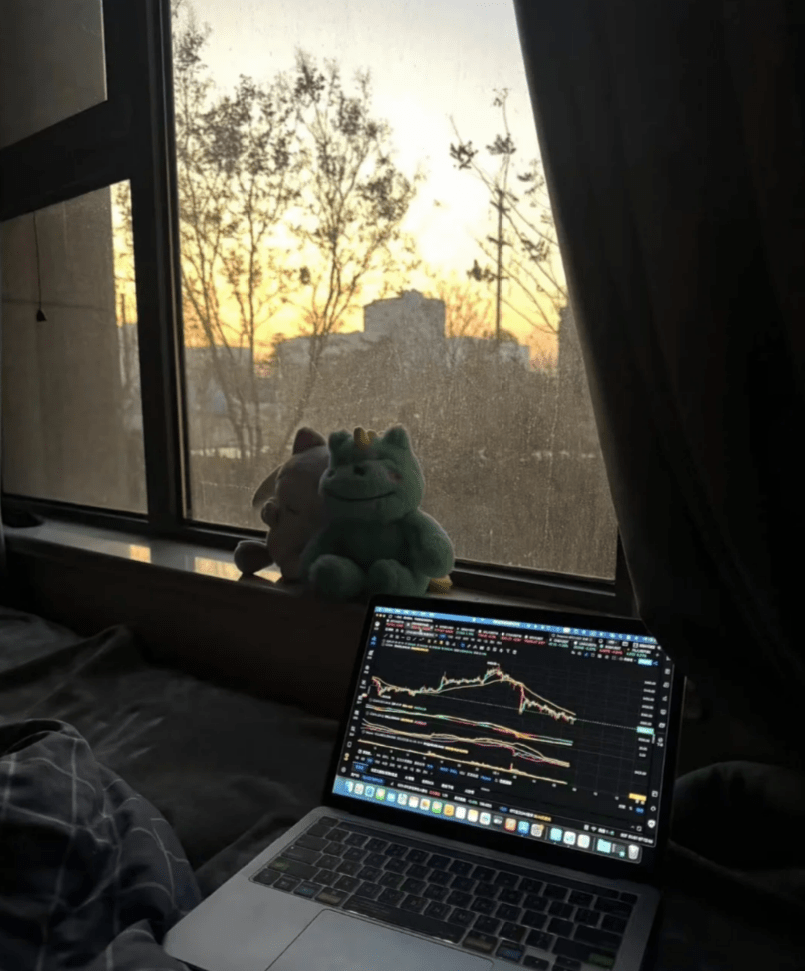As a full-time trader, my journey has not been smooth. Those dark moments of significant capital loss and consecutive failures made me question my trading system madly. But a 'mean reversion strategy' became my lifeline, helping me stabilize and turn things around. Now, I'm sharing the core content with you, hoping that if you are also experiencing 'self-doubt' in trading, these experiences can lend you a hand.
1. Entry Logic: Focus on Two Types of Opportunities, Strike Accurately
(1) Breakout from Consolidation
Price repeatedly oscillates within the consolidation range, seemingly 'still waters,' but in reality, it hides secrets. Once it breaks out effectively, the previous 'silence' signals the market's explosive potential.
I focus on this 'moment of ignition': if the direction is right, decisively increase positions in line with the trend; if the direction is wrong, immediately stop-loss and exit, without hesitation.
(2) Turning Points in Trends
In an uptrend, the point where it raises again after a normal pullback; in a downtrend, the moment when the rebound ends and falls back again, all are good entry opportunities.
The essence is 'follow the big cycle, counter the small waves': use 15-minute and 1-hour candlesticks to find pullback turning points, but the premise is that the daily and weekly trends are clear. As long as the big direction is intact, adjustments signal a good entry.
2. Trading Subtraction: Focus Less on Indicators, Return to Essentials
Many traders always feel 'not enough certainty,' wildly stacking indicators and increasing cycles, resulting in a chart that looks like facing a pile of unsynchronized clocks, becoming increasingly chaotic.
My approach is the opposite—do subtraction: focus only on daily and weekly for direction, and strictly adhere to 1-hour or 15-minute execution cycles, which is clear enough. Indicators? Use them as aids, simply track stop-loss with moving averages: if the price is above the line, hold; if it breaks, decisively take profit and exit, securing your gains.
3. Position Management: Start with Light Positions, Staying Alive is Key
Position management tests execution, not 'gambling nature.' When the skills are not mature, 'light position + stop-loss' is my risk control treasure.
If you can't confidently 'run 10 kilometers,' start by trying '2 kilometers.' Initially, I only dared to use 5% position, or even lighter; even if I lost, it was within my bearable range. Don't worry about 'slow earnings,' trading is a marathon, as long as the rules are clear and the account is 'alive,' time will help amplify your advantages. The power of compounding never fails due to small positions; the key is to 'stay alive longer and walk steadily.'
4. The Essence of Trading: Patience, Discipline, Execution are Key
Trading doesn't rely on 'charging hard'; it's about patience, discipline, and execution. What truly makes a difference is not how 'cool' the skills are, but whether one can abandon the gambler's fantasy of 'turning over in one shot' and return to a simple, repetitive, low-error, and enduring trading path.
This is how I climbed out step by step from the bottom. If you are also stuck in a trading bottleneck, try these methods. It's okay to move slowly; after all, trading is a marathon, and only those who laugh last are the winners.
